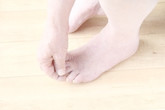Why diabetes mellitus causes glykosuria?
Normal blood glucose levels are between 3.5 and 5.5 mmol/litre. Patients suffering from diabetes mellitus have much higher blood glucose level, which sometimes exceeds 11 mmol/litre. Such high levels cause glykosuria, which means presence of glucose in urine. In this post we shall take a detailed look on this problem and explain why diabetic patients have glucose in their urine.
Glucose is a simple saccharide, which circulates in human blood and represents a source of energy (ATP) for tissues. Kidneys filter the blood in their nephrons (e.g. basic structural and functional units of a kidney) and glucose gets in the primary urine together with water and other substances.
In healthy individuals all glucose is re-absorbed back to blood from the primary urine via complex transport systems. These transport systems are called SGLT2 (sodium-glucose linked transporter) and they are a part of cell membranes in kidney tubules. As you can see from the name of this transporter, glucose is co-transported in the cell from urine together with Na+ ions. This process is called co-transport or secondary active transport. This process consumes energy (ATP) and is closely related to the activity of an enzyme called Na+/K+-ATPase, which helps to create a gradient for glucose transport back to blood.
While healthy individuals the level of glucose in blood and primary urine is low and SGLT2s can take all glucose back to the blood, diabetic patients have high level of glucose in blood and primary urine and the kidneys are not able to take all glucose back to the blood. Therefore some glucose is excreted with the definitive urine. This is called glykosuria and is an early sign of diabetes or other metabolic disorders.
There is actually a kidney threshold for glucose. If the glucose blood level exceeds 11.0 mmol/l glucose will be excreted in urine.
| Written by: | Michal Vilímovský (EN) |
|---|---|
| Education: | Physician |
| Published: | February 11, 2013 at 4:23 AM |
| Next scheduled update: | February 11, 2015 at 4:23 AM |
Related articles
Get more articles like this in your inbox
Sign up for our daily mail and get the best evidence based health, nutrition and beauty articles on the web.







Ache in left arm that you should not ignore
Alkaline water dangers: why you should not drink it
How to Avoid Sleepiness While Studying?
23 Foods That Increase Leptin Sensitivity
Low dopamine (e.g. dopamine deficiency): causes, symptoms, diagnosis and treatment options
Swollen taste buds: the ultimate guide to causes, symptoms and treatment
Thin endometrial lining: causes, symptoms, diagnosis and treatment
Pimples inside nose: the complete guide
Holes in tonsils: definition, symptoms, treatment and prevention
How to deal with an ingrown hair cyst
Allegra vs. Zyrtec vs. Claritin
Allergy to penicillin and alternative antibiotics
How to get rid of phlegm (excessive mucus) in throat? Detailed guide to medical and home remedies, symptoms and causes
What causes stomach ache after meals?
Liver blood test results explained